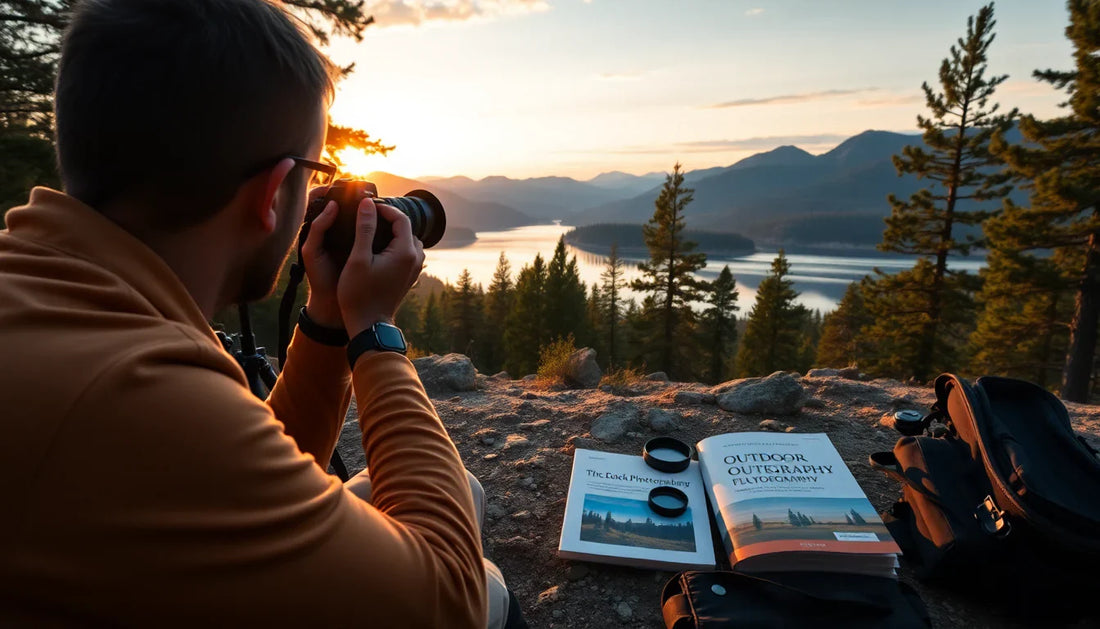
How to Capture Stunning Camping Photos: Tips for Beginners
Share
Camping is not just about reconnecting with nature and unplugging from the digital world - it's also an incredible opportunity to capture breathtaking photographs that will forever immortalize your outdoor adventures. Whether you're a seasoned photographer or a complete beginner, learning the art of camping photography can elevate your camping experience and create lasting memories.
In this comprehensive guide, we'll dive into the essential gear, camera settings, composition techniques, and creative ideas to help you take your camping photography to new heights. Get ready to transform your ordinary camping trips into visually stunning masterpieces that will leave your friends and family in awe.
Essential Gear for Camping Photography
The first step to capturing stunning camping photos is to have the right gear. While you don't need to break the bank, investing in a few key pieces of equipment can make a significant difference in the quality of your images.
At the heart of your setup should be a reliable camera, whether it's a DSLR, mirrorless, or even a high-quality smartphone. Look for a camera that offers manual controls, allowing you to adjust settings like aperture, shutter speed, and ISO to suit the changing outdoor conditions.
Alongside your camera, consider adding a sturdy tripod to your kit. This invaluable accessory will help you capture sharp, blur-free images, especially in low-light situations or when shooting long exposures. A compact, lightweight tripod is ideal for camping, as it won't weigh you down on the trail.
Other must-have items include extra batteries, memory cards, and a lens cleaning kit to keep your gear in top shape. Depending on your photography goals, you may also want to invest in specialized lenses, such as a wide-angle lens for landscape shots or a telephoto lens for wildlife photography.
Camera Settings for Outdoor Environments
Mastering the right camera settings is crucial when photographing in the great outdoors. The constantly changing lighting conditions and dynamic environments can be challenging, but with a little practice, you'll be able to capture stunning images with ease.
Start by familiarizing yourself with the exposure triangle - the relationship between aperture, shutter speed, and ISO. In general, you'll want to use a wider aperture (lower f-number) to create a shallow depth of field and blur the background, a faster shutter speed to freeze action, and a lower ISO to minimize noise in your images.
When shooting landscapes, consider using a smaller aperture (higher f-number) to keep the entire scene in focus. For night sky or campfire photography, experiment with longer exposures and higher ISO settings to capture the drama of the night.
Don't forget to also play with your camera's white balance settings to ensure accurate color representation in your photos. Adjusting the white balance can help you achieve a warm, cozy feel for your campfire shots or a cool, moody atmosphere for your nighttime landscapes.
Composition Techniques
Composition is the foundation of any great photograph, and this holds true for camping photography as well. By applying simple yet effective composition techniques, you can elevate your images and create a more visually compelling story.
One of the most fundamental rules is the rule of thirds. Imagine your frame divided into nine equal parts, with four intersecting points. Place your main subject or point of interest along these lines or at the intersections to create a more balanced and aesthetically pleasing composition.
Another technique to consider is framing. Look for natural elements, such as trees, rocks, or the entrance of a tent, to frame your main subject, adding depth and drawing the viewer's eye to the focal point.
When capturing landscapes, experiment with different perspectives. Get low to the ground to emphasize the grandeur of the mountains or climb to a higher vantage point to showcase the vastness of the scenery. Don't be afraid to get creative and try unconventional angles to capture unique and captivating shots.
Lighting and Time of Day
Lighting is one of the most crucial elements in photography, and it's especially important when shooting in the great outdoors. The time of day can have a significant impact on the quality and mood of your images.
The golden hour, the period just after sunrise and before sunset, is often considered the best time for landscape and outdoor photography. During this time, the warm, soft light can create stunning, dramatic shadows and highlight the natural beauty of your surroundings.
Sunrise and sunset shots can also be incredibly rewarding, as the changing light can transform a familiar scene into something truly breathtaking. Experiment with different camera settings and compositions to capture the full range of colors and textures.
Don't be discouraged by challenging lighting conditions, such as midday sun or overcast skies. These situations can also present unique opportunities. Use reflectors or diffusers to manage harsh shadows, or embrace the moody, atmospheric qualities of the overcast light.
Creative Photography Ideas
Capturing the essence of camping goes beyond simply documenting your outdoor adventures. Unleash your creativity and experiment with different techniques to tell a more compelling story through your photographs.
Consider incorporating human elements into your compositions, such as capturing your fellow campers engaged in activities or silhouetted against the campfire. This can add a sense of scale and narrative to your images, drawing the viewer into the scene.
Explore unique perspectives by getting low to the ground or climbing to a higher vantage point. Capture the details that often go unnoticed, like the intricate patterns of a pine cone, the texture of a weathered log, or the reflection of the stars in a still lake.
Don't be afraid to experiment with long exposures, light painting, or even drone photography (if you have the necessary equipment and permissions) to create truly stunning and memorable images.
Post-Processing and Editing
While capturing great photos in-camera is the ultimate goal, post-processing can be a powerful tool to enhance your camping images and bring them to life. Whether you prefer to use desktop software or mobile apps, a few simple edits can make a significant difference in the final result.
Start by adjusting the basic settings, such as exposure, contrast, and color balance, to ensure your photos are properly balanced and true to the scene. Experiment with cropping and straightening to improve the composition and draw the viewer's eye to the most important elements.
For a more polished, professional look, consider adding subtle adjustments to the highlights, shadows, and clarity of your images. This can help to accentuate the textures and details in your photos, making them pop off the screen.
If you're feeling adventurous, explore more advanced editing techniques, such as dodging and burning, selective color adjustments, or even composite images. These skills can take your camping photography to the next level, allowing you to create truly unique and captivating visuals.
Conclusion
Capturing stunning camping photos is not just about having the right gear or mastering technical skills - it's about embracing the beauty of the great outdoors and finding creative ways to share your experiences with the world.
By following the tips and techniques outlined in this guide, you'll be well on your way to transforming your ordinary camping trips into a visual feast for the senses. Remember to experiment, have fun, and most importantly, enjoy the process of capturing the magic of the great outdoors.
So, grab your camera, pack your gear, and get ready to embark on a photographic adventure that will leave a lasting impression on you and your loved ones. Happy camping, and happy shooting!
